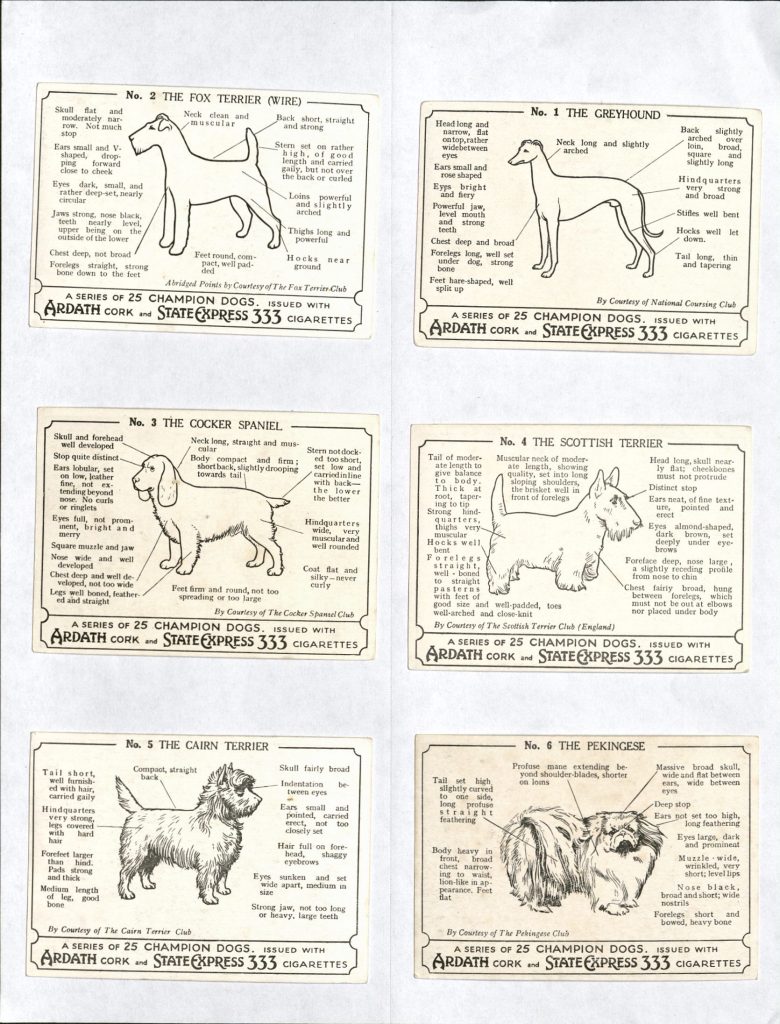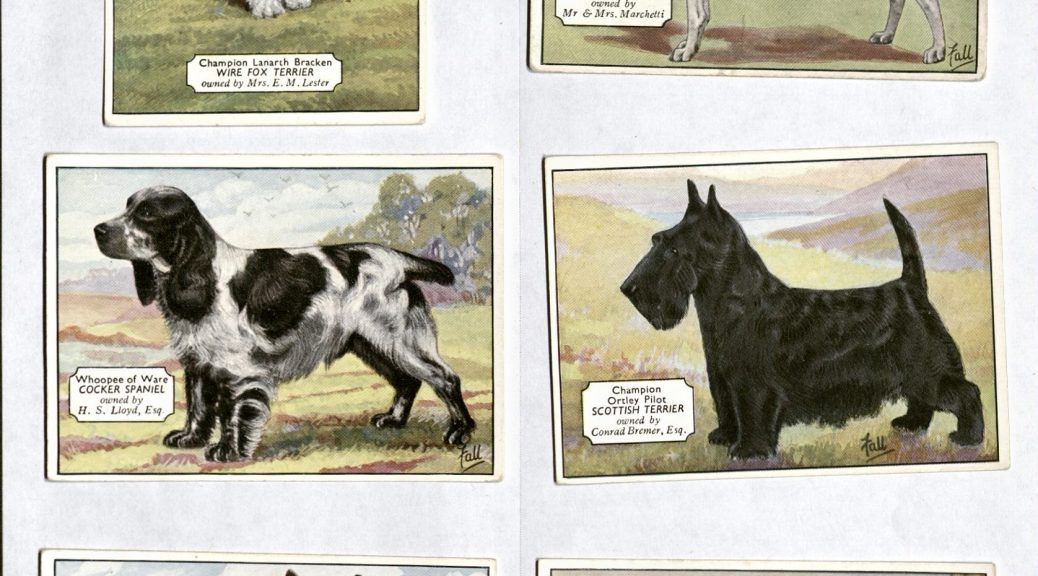Post contributed by Steph Crowell, Trent History of Medicine Intern.
In 2019, it can be difficult to imagine living in a world where people were allowed to smoke on airplanes, in restaurants, or even in hospitals. Duke itself is doing its part to participate in the history of tobacco regulation these days, declaring that on July 1, 2020, Duke will be one among many universities to finally be a smoke-free campus. If this is news to you, I’m happy to say that the folks at Duke Health have put together an FAQ (and a countdown to July 1).
Because this is such a significant event in Duke’s own history of medicine, we decided to take a look in the Rubenstein’s stacks to see exactly what we had on the subject of tobacco. Below is one of our findings: trading cards.
Yes, trading cards. This set of champion dog trading cards from Ardath Tobacco Company in Great Britain dates back to 1934 and contains twenty-five unique, award-winning dogs. Each card has a colored picture of the featured dog on the front, as well as text telling the avid collector the name of the dog, the breed, and the owners.

On the back are more detailed, informal anatomical diagrams of the dogs pointing out their trademark features. A favorite is No. 3, the cocker spaniel, whose eyes are described as “full, not prominent, bright and merry” (pictured below). Also included on the back are the card numbers and branding.

Champion Dogs, 1934, 1-5 (back), Terence Mitchell Collection of Tobacco-Related Ephemera, David M. Rubenstein Rare Book & Manuscript Library, Duke University.
The collection that houses these cards is massive- it contains multiple sets of trading cards, collectible fabrics, pins, cartons and packs of cigarettes. If you’re curious about the specifics, check out the collection guide. It can be intimidating to look at given the volume of items listed, but Terence Mitchell, the collector, was conscious of this and organized everything by type and topic. As far as trading cards go, there are assorted animals, famous people, famous art pieces, pirates, pieces of architecture, and much more all from a variety of companies in the United States and Great Britain.
The cards served a functional purpose in both the packaging of cigarettes and their marketing. According to the Museum of Obsolete Media, packaging for cigarettes was a bit flimsy from the 19th to early 20th century so these cards were inserted to help it keep its shape. As time went on, however, and the cards began to diversify, people began to be drawn to them because they provided a unique way to see images from around the world that would have been impossible for the average person to afford to go see. It was exciting, enticing, and, most of all, cheap.
These days, because of regulations and public awareness of the negative health impact that tobacco products have on the human body, the age of tobacco trading cards has passed. Companies are forced to be clear about these dangers in their ads, on their packaging, anywhere they might be engaging the public. In a relatively short period of time, this has profoundly affected the way we view tobacco and evaluate the extent to which we will tolerate it in public spaces.
Less than a hundred years after these trading cards were printed, the FDA is still finding its legs in legislating what kinds of warnings should be included on tobacco products. Warnings have been mandatory for only a few years now (to check out all of the FDA’s requirements, check here) and are still in flux.
As these things continue to happen, it can be a comfort to be able to see for oneself exactly why these regulations and initiatives have to be put in place to begin with. This collection of ephemera is available for Researchers to view in the Rubenstein’s reading room. If you’re interested but not sure how that process works, here’s a link to our FAQ, or feel free to contact us to ask any questions you may have!


